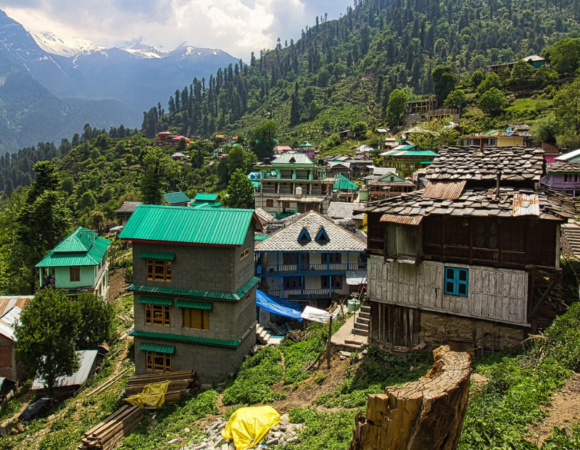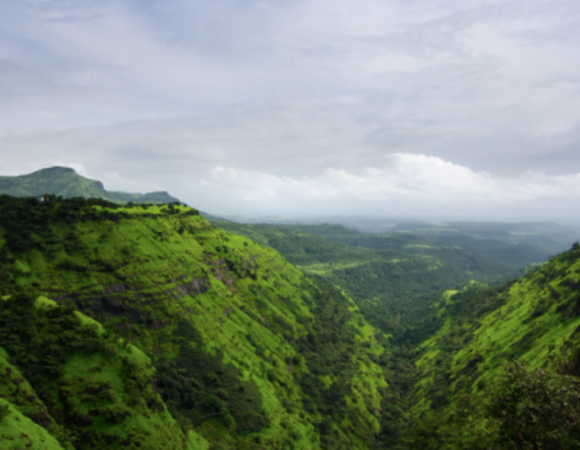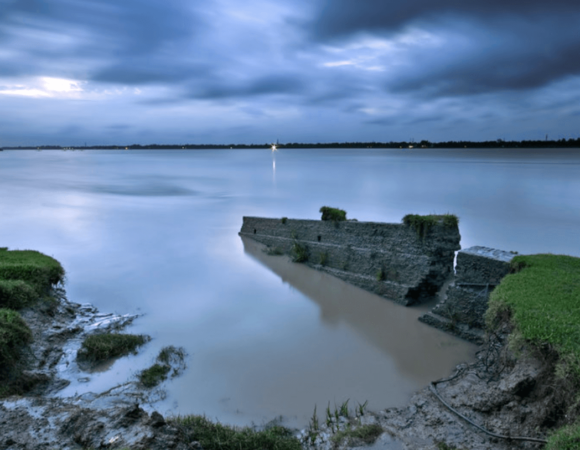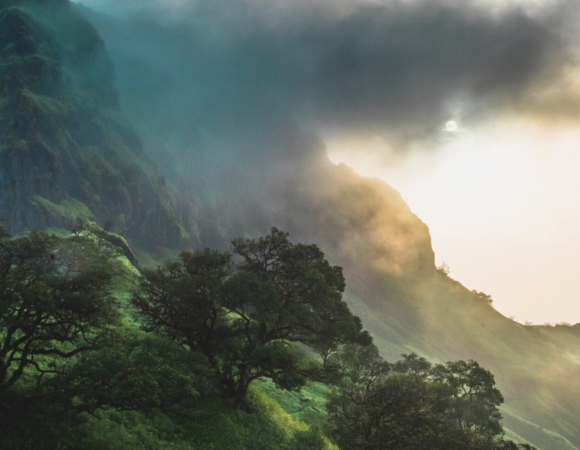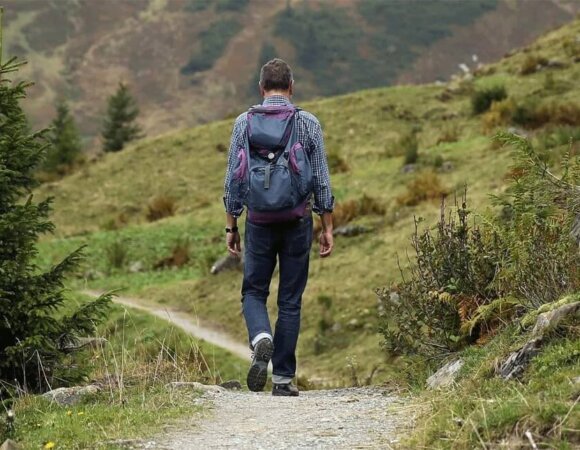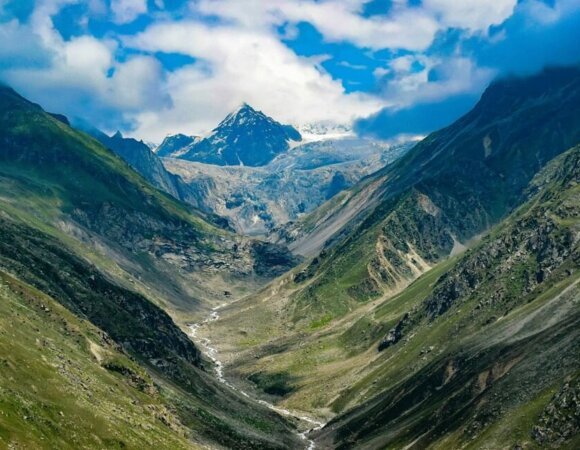Chadar Trek Guide 2024: Distance, Route, Map, Best Time & Itinerary
Table of Contents
ToggleDisplaying a surreal backdrop of vibrant colors, the Frozen River Trek popularly known as the Chadar Trek is one of the most challenging and strenuous treks in the Ladakh region of Jammu and Kashmir State in India.
Therefore such a trek is only and only meant for those amateur and experienced trekkers that have one or two trekking experiences and also, wish to experience the ultimate thrill and excitement.
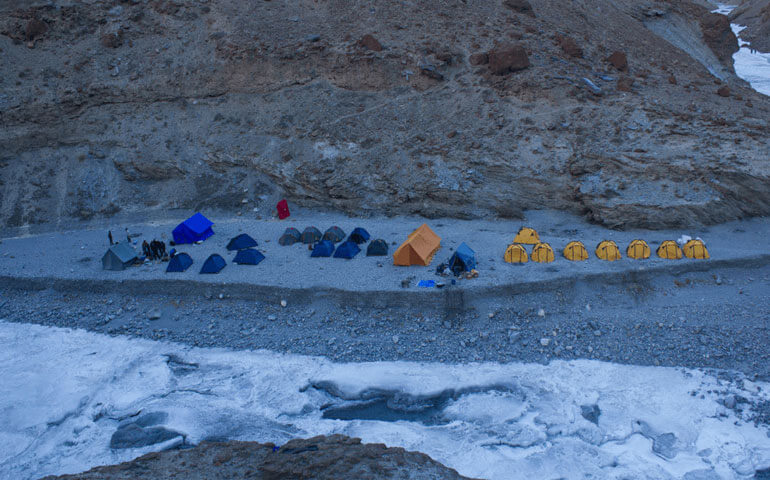
This trek is a winter trail in the Zanskar region of Ladakh. Moreover, the Zanskar region is famous for its stunning scenery and Tibetan-style Buddhist monasteries.
This arduous trek trail on the ice-clogged river under the gleaming blue winter sky passes through numerous beautiful valleys, mountain caves, and frozen waterfalls.
It is also one of the most strenuous treks in the Indian Himalayas as trekkers have to pass through rugged rocks and temperatures may surprisingly dip to minus 10 degrees, a rare climatic condition that can be difficult to acclimate to.
| Area | Ladakh Himalaya |
| Duration | 13 Days |
| Best Season | Mid January – February |
| Grade | Moderate |
| Altitude | 3850 mts/12628 ft |
| Trek Length | 80 km Gradual |
Chadar Trek Images
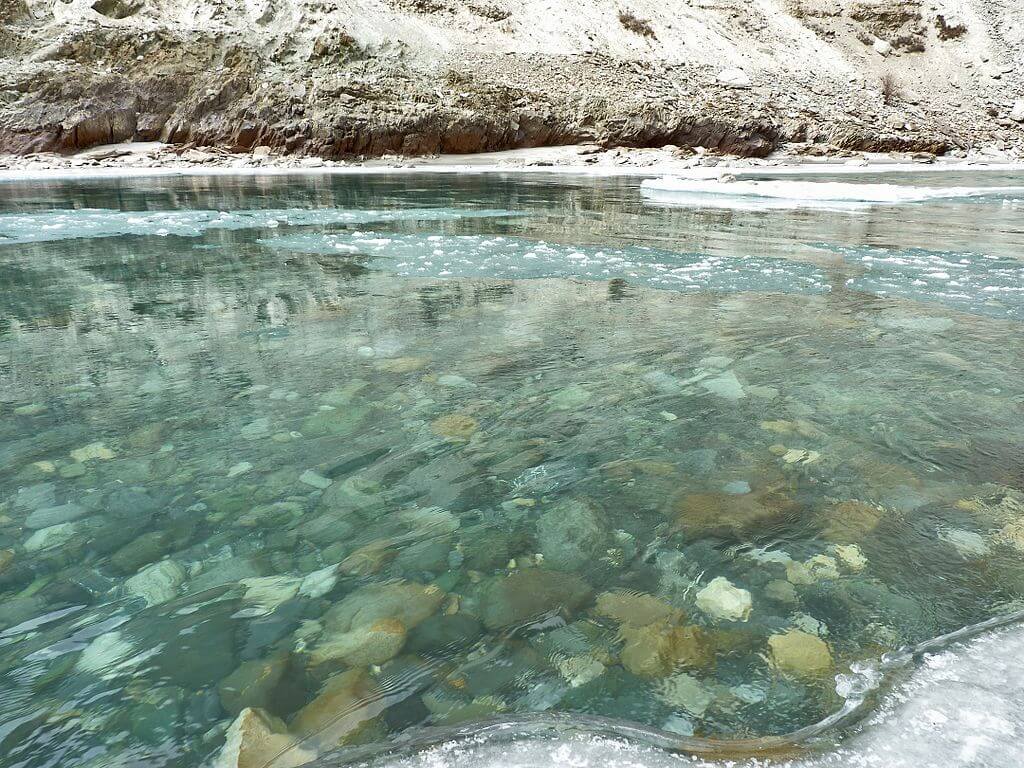
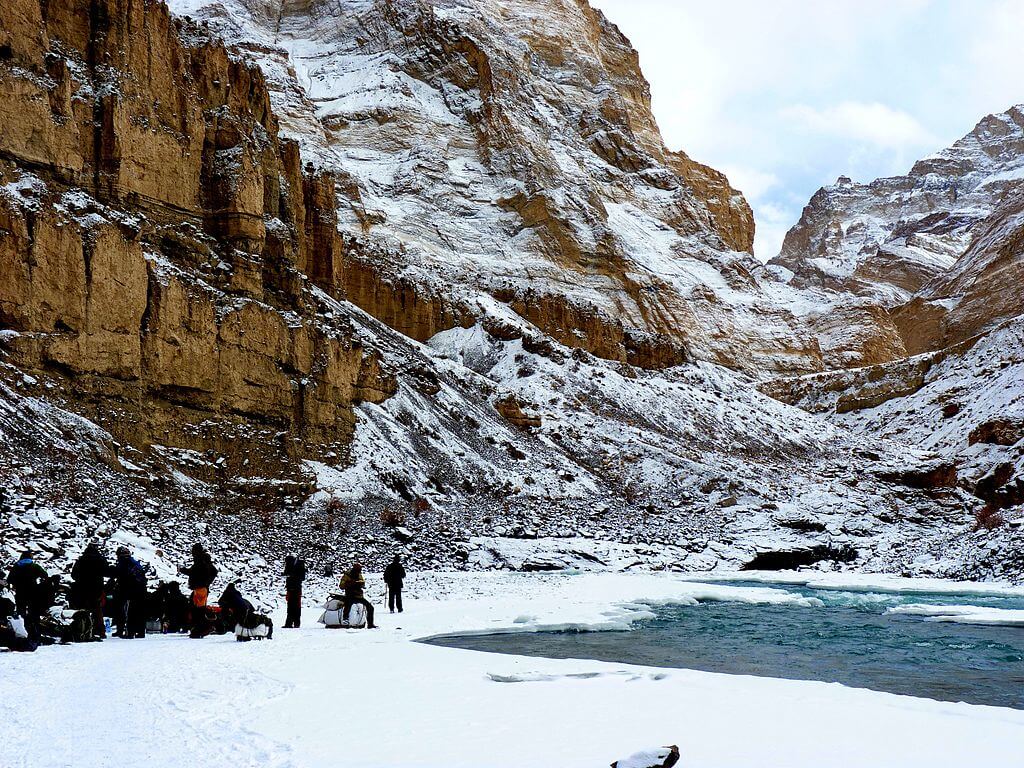



Where is Chadar Trek?
During the winter season, the Zanskar River freezes, giving trekkers a perfect solid platform for trekking. So just imagine, the trail to the Zanskar valley is going to be a challenging yet thrilling experience for the trekkers as the frozen vertical cliffs are 600 m high, and the Zanskar river is about 5 m wide.
Best Time to Visit Chadar Trek
The ideal time to visit the Frozen River Chadar Trek is between mid-January to February as during this time the upper layer of the Zanskar River freezes. The river looks like a sheet of ice; hence, it is referred to in the local language as ‘Chadar’ which means blanket.
Read more: Hidden Hill Stations In India
The winter in Ladakh region is frigid with nature. From January to February the days are relatively warmer but there will be a chill in the air. January is the coldest month in Ladakh. Early mornings, evenings and night times are extremely cold.
Daytime temperatures in Leh, and on the trek, will be between –25°C to 6°C and night-time temperatures can drop to -25°C to – 35°C. There is heavy snowfall in January and February and everything around is covered in pristine white snow.
Chadar Trek Highlights
- Trek along the conventional winter trading route connecting Padum to Ladakh along the frozen Zanskar River.
- This is an arduous adventure with only a couple of groups making the trek every year. The conditions on the river can vary so a flexible approach is required!
- Gain insight into the local culture of Zanskar and you will get a unique opportunity to homestay in the beautiful Zanskari villages along the way.
- Go for a sightseeing tour to explore the architecturally rich Gompas and forts around Leh as you
- let yourself acclimatise to the altitude.
Witness rare Ladakhi fauna species like Snow Leopard, Ibex, Himalayan Thar, blue sheep, etc.
How to Reach Chadar Trek?
By Air:
Leh Kushok Bakula Rimpochee Airport is the main airport in Leh City. There are quite a number of flights like Air India and Go Air that connect Leh with Delhi and with a few other major cities in India. You can opt for air travel and have a very unique and thrilling experience of flying over the mountains.
By Road:
Leh is inaccessible via roadways and railways during this time period(winter season).
Read more: Sham Valley Trek Ladakh
Places To Visit Near Chadar Trek (Zanskar Region)
1. Zanskar Valley
An acute and mesmerizing sight, Zanskar Valley is popular for the challenging treks it offers. With the craggy landscape of the surrounding mountains, the snow-covered peaks, the smooth flow of the misty clouds, the breathlessness offered by the isolation, and the flawless glory of nature, the valley is a breathtaking sight. This valley sits in the Zanskar range of the great Himalayan Mountains.
The range, rising to an elevation of about 6000 meters, is home to several exotic flora and fauna species. On the way to the valley, you can witness captivating meadows, gleaming streams, and the Drang-Drung Glacier among other sights.
2. Pensi La Pass
Known for separating the Zanskar valley from the Suru valley, Pensi La Pass is located at 4400 meters above sea level in the Zanskar range of mountains.
Rich with exotic medicinal plants, blue-green water springs and a spectacular view of the circumscribing mountains, this region is the best campsite for trekkers who wish to refresh themselves before resuming their journey. A variety of fauna are also present here including the commonly observed marmots and brown bears.
The Pass is also bounded by glaciers on both sides, from which streams flow into the Suru and Zanskar river, creating an enchanting sight.
But it is accessible only during the months from May to September, and the region is submerged and hazardous due to heavy snowfall observed during the rest of the months.
3. Padum
Named after an ancient Indian Buddhist master called Padmasambhava who was known as the second Buddha, the historically rich town of Padum rests at an altitude of 3669 metres in the Zanskar range.
The most populated town of Zanskar, Padum also serves as the abode of flora and fauna species.
Once the known capital of the ancient Zanskar Kingdom, the region still holds ancient relics like intricate carvings on a large rock situated on the banks of the river Lung-nak, dating back to the 8th century.
The town also consists of two ancient Buddhist monasteries situated on the hilltop. Apart from these attractions, the breathtaking beauty of the surrounding areas from this region is too lovely to be put into words.
Also acting as a trekking base, the landscape comprises of vast grasslands, huge agricultural fields, lush green forests, beautiful streams and the ruggedness of the mountains.
4. Zanskar River
As mentioned above, the Zanskar River trek or the Chadar Trek is a winter trail and is undertaken by some of the bravest souls of the land. One of the largest tributaries of the river Indus, Zanskar River emerges from the north-facing Himalayan slopes.
Further, the Zanskar River bifurcates into the Doda tributary, which begins in close proximity to the Pensi La Pass and flows alongside the Zanskar Valley towards Padum, whereas the Kargyag river tributary forms the second branch emerging from the Shingo La and Tsarap river.
The confluence of these two tributaries forms the Lungnak river which is also called as Lingti or Tsarap river. The entire area of the Zanskar river forms a U-shaped valley owing to the surrounding glaciers.
A captivating sight by day as well as during the night, the river provides an enthralling trek, especially during the winter months at a whopping elevation of 3800 metres making it a must-visit site.
5. Rangdum
Situated between Kargil and Padum, Rangdum is an elliptically shaped plateau in the Kargil district of the Jammu and Kashmir State. Situated at an elevation of 3657 metres, the plateau lies in the Suru Valley region about 100 kilometres away from the Kargil city.
Surrounded by colourful hills on one side and dazzling white glaciers on the other, the region is an alluring place. The Drang-drung glacier can also be witnessed from this region.
A beautiful region in the north of India, Zanskar is home to such amazing places that you can explore to relish your lovely vacation.
Frozen River Chadar Trek Itinerary
Day 1: Delhi – Leh (Rest for acclimatization)
Take a flight from Delhi to Leh. I would suggest a morning flight. On arrival at Ladakh, take a taxi in order to reach the hotel. Then you can visit the local markets of Leh like the Tibetan market for clothes and the Moti market in the evening. Try to return early from the markets and take proper rest in the hotel.
Day 2: Leh – Shey – Thiksey – Hemis
So, today you will be heading on a sightseeing tour to some important monasteries in the area. You will be visiting Shey Gompa, which was once the summer capital of Ladakhi kings; Thiksey Gompa, which is said to be one of the most beautiful structures in Ladakh and the famous Hemis Monastery belonging to Drukpa Order. Then, you may stay at the guest house in Leh.
Day 3: Leh – Chilling (3200 mts/ 5 hrs drive)
Start the day with a hearty breakfast and then embark on a trip to Pishu Village, through the roads that are bestowed with the sheer charisma of nature. Overnight, stay in the guest house.
Day 4: Chilling – Zaribago (3250 mts / 5 hrs)
Try to wake up by 7 am. I know it is difficult to wake up so early when you are on vacation. Yet, to make your vacation special try to follow some tips. Then get fresh and eat a proper, light, and healthy breakfast. Also remember to carry some biscuits, fruits, water bottles, and napkins along with you.
Begin the first day of the trek to Zaribago, which will take approximately five hours to reach. Overnight, stay in Zaribago.
Day 5: Zaribago – Deepyokma (3300 mts/ 5 hrs)
Today, it is going to be a thrilling yet exciting experience as you will walk on the frozen Zanskar River till you reach Deepyokma. Overnight, stay in the Deepyokma camp.
Day 6: Deepyokma – Nyarakpulu (3400 mts/5-6 hrs)
Today you need to reach Nyarakpulu below the Nyarak village from Deepyokma by trekking for about 5-6 hours. Overnight, stay in the camp.
Day 7: Nyarakpulu – Lingshed (3800 mts/ 4 hrs)
Depart from Nyarakpulu and have an hour’s walk to reach the small village of Lingshed. Relish the local culture and pleasing atmosphere of the private houses equipped with central heating systems.
Day 8: Lingshed (3800 mts)
Get ready for a fun-filled and exciting day of the Frozen River Chadar Trek. Witness the breathtaking landscapes of Lingshed, visit the monasteries and spend time with the natives of Lingshed. Stay in a Lingshed guest house.
Day 9: Lingshed – Nyarakpulu ( 3400 mts/ 5 hrs)
Today you need to trek till Nyarakpulu. Overnight, stay in a Nyarakpulu guest house.
Day 10: Nyarakpulu – Tso Mopoaldar (3200 mts/8 hrs)
Today, get ready for a long walk of around 5 hours from Nyarakpulu to the campsite at Tso Mopoaldar.
Day 11: Tso Mopoaldar – Tilatdo
Post a nutritious breakfast and embark on a trek till Tilatdo. Overnight, stay in Tilatdo.
Day 12: Tilatdo – Chilling – Leh
Return to Chilling. Drive ahead and reach Leh. Overnight, stay at a hotel in Leh.
Day 13: Leh – Delhi
Now your trip is still not got over. You still have to reach your home. So, reach the airport in time to catch the flight to Delhi and also, for those who have come by road, I wish you a safe journey ahead. Do not forget to capture some photos,and shoot videos while driving through the hills, forests, and then the plains.
I know you must be feeling quite tired and also sad at the same time because your trip has now come to an end. But I hope you enjoyed your trip to Frozen River Chadar Trek. Till then, keep on trying new trekking activities. We will meet soon with a new trek!
Frequently Asked Questions About Chadar Trek
When Should I Book for Chadar Trek?
You should book this trek two to three months in advance so that you get an ample amount of time to prepare for the trek.
What is the Minimum Age Required for Chadar Trek?
The Chadar trek is a moderate trek with a maximum altitude of 3850 mts/12628 ft, so the minimum age required is 15 years.
What kind of shoes will be Required for Chadar Trek?
Trekking shoes with good ankle support are a must for any trek in the Himalayas. Quechua Forlclaz 500, Hi-Tec Colman, and Salomon are some of the ideal shoes with value for money.
Is it Safe to Drink Water From Streams?
Himalayan stream water is safe to drink as well as for cooking but it is better if you can carry a few chlorine tablets for disinfecting water.
Which Vehicles are Used for Transportation Purposes?
Most of the Himalayan roads towards the trek are rugged, so a vehicle with good ground clearance like Mahindra Bolero, Scorpio, Safari Dicor, Tata Sumo, etc are used for transportation purposes
Is Chadar Trek for Beginners?
What i believe is that yes, chadar treks are for beginners but if they follow your guide instructions properly so there is no harm and the rest of thing is dependent upon yourself.

